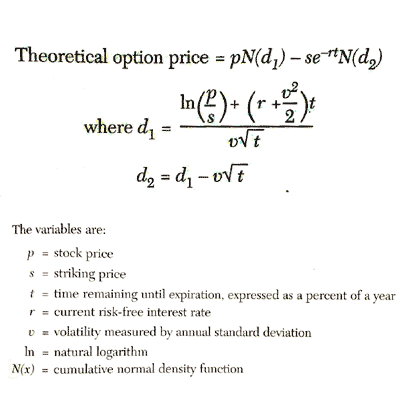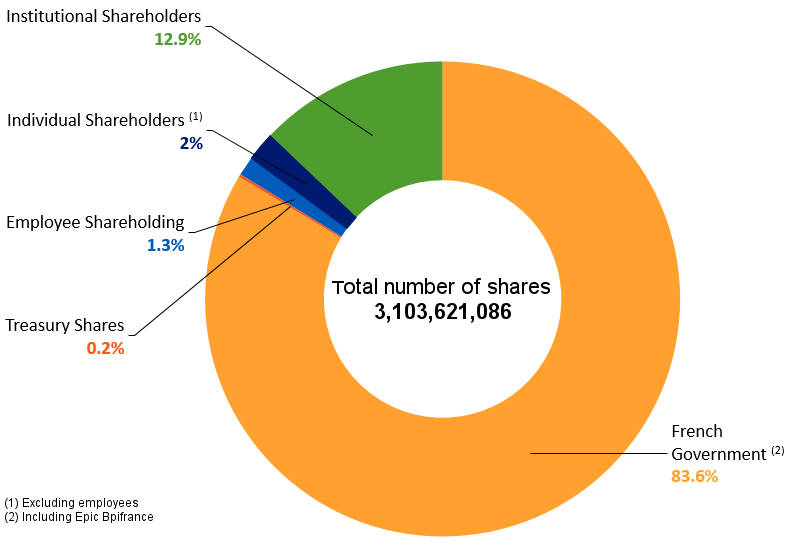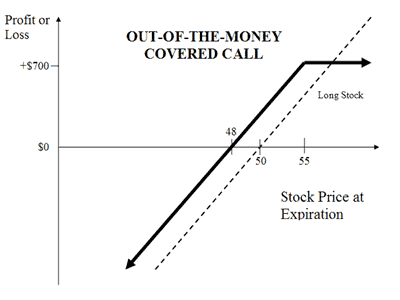Monopsony Market Examples Monopsony Power & Characteristics 2023
ТОП 6 мов програмування для вивчення у 2022 році
enero 13, 2022some Qualities of your Successful Relationship
enero 15, 2022
This means the seller has very little negotiating power because the buyer can dictate prices. This is different than a monopoly because a monopoly typically has one seller. The power in a monopsony comes from the fact that the buyers have to come through the same seller.
- Earnings, however, are consistently higher than for employees of comparable qualifications in other sectors (Sarkar and Mehta 2016).
- Some authors have argued informally that, while this is so for market supply, the reverse may somehow be true of the supply to individual firms.
- With most industries having no barriers to entry, it becomes relatively easier for businesses to enter a market and tap into potential opportunities.
- Other more current examples may include school districts where teachers have little mobility across districts.
- Due to this fact, that purchaser (monopsonist) will have the power of wealth.
Consequently, there is not only an accumulation of profits in the hands of brands, but also a transfer of surplus from the Global South to the Global North. A subsidy extracted from the poorest sections of producers in the value chain that, in addition, is transferred from the Global South to the Global North. In this capture of surplus, IP-protected rights over monopolized knowledge are combined with monopsony in global markets for labour and other inputs. This provides a succinct characterization of global monopsony capitalism, where global monopsony is combined with the structures of monopoly.
Problems of monopsony in labour markets
While monopsony refers to one buyer in a market of multiple sellers, monopoly refers to one seller in a market of multiple buyers. A monopsony can result from market consolidation where several buyers merge and control a significant share of the market. Consider how the merger of telecommunication giants T-Mobile and Sprint caused changes on the demand side of business. Instead of there being two different buyers, the post-merger market resulted in just one company (but still potentially buying the same amount of goods). Monopsonies take many different forms and may occur in all types of markets. For example, some economists have accused Ernest and Julio Gallo–a conglomerate of wineries and wine producers–of being a monopsony.

If there is only one main employer of labour, then they have market power in setting wages and choosing how many workers to employ. There are also suppliers to the government, which we can consider as a monopsony. However, this doesn’t fit the definition of a monopsony as there aren’t many sellers in the market. For instance, with regards to fighter jets, there are only 3 companies that serve the US government. So whilst the US government is able to maintain bargaining power, it is unable to exert the same undue influence should there be forty suppliers.
Though it was initially established as an organization wholly owned by the government, it currently has its stock traded on the NSE. IRCTC enjoys the power of Monopoly as it is the only organization that operates Indian Railways. There are various types of market structures that are operational in the economy like monopolistic, oligopolistic, Monopoly and perfect markets.
Monopoly vs. Monopsony: What’s the Difference?
Although cases of pure monopsony are rare, monopsonistic elements are found wherever there are many sellers and few purchasers. The monopsony labor market is a type of imperfect competition in which there is one buyer of labor but only many sellers. The buyer has the power to set wages and other terms of employment. Monopolies effectively eliminate economic competition for the production of a particular good, including possible substitutes for it.
Of course, it will have resemblances with both smallholder production and wages as a labour-power transaction, but it is necessary to go beyond both of those analogies. Monopsony power is also manifest in the new platform-based firms.4 Platforms operate on both sides of markets. This condition is still inefficient compared to a competitive market. The line segment represented by A-B shows that there are still workers who would like to find a job, but cannot due to the monopsonistic nature of this industry. This illustrates that there will be deadweight loss in a monopsonistic labour environment regardless of minimum wage levels, however a minimum wage law can increase total employment within the industry.
Monopsony
What this discussion points to is that there is scope for exploring monopsony as an explanation of the gender wage gap and other gender differences in employment. Monopsonist firms clearly decide to pay lower wages to women, utilizing the vulnerabilities of women in employment. One aspect of these vulnerabilities is the extraction of unpaid care work from women. Many countries have equal pay legislation, which should prevent unequal pay between genders. Employers get around this by differently classifying women and men workers. In the garment and shoe manufacturing segments in India, employers categorize women at a lower level of semi-skilled workers, while male tailors are categorized as skilled workers.
- Although the company has diversified into a conglomerate in the last century.
- Similarly to perfect competition, it doesn’t tend to exist – although there are examples whereby companies exert monopsony like power.
- This has made it necessary to specialise and commit for a long period to invest in the development of products and their maintenance.
- This allows the supermarket to extract full profitability from them.
- A monopsony is unique to other forms of market situation with distinctive market features.
Since the Act was effectively minimum wage legislation for women, this might perhaps be interpreted as a symptom of monopsonistic discrimination. Following such definitions, the grey rectangle, in the diagram, is the part of the competitive social surplus that has been redistributed from the workers to their employer(s) under monopsony. By contrast, the yellow triangle is the part of the competitive social surplus that has been lost by both parties, as a result of the monopsonistic restriction monopsony examples in india of employment.[6] This is a net social loss and is called deadweight loss. It is a measure of the market failure caused by monopsony power, through a wasteful misallocation of resources. Since there is no other buyer in the market, the manufacturers and suppliers will be having no choice but to sell their products to the monopsonist at the terms and prices set by them. This is not good for the economy and market as the prices will be as determined by the monopsonist and may not be fair.
Industry Impact
However, monopsony power might also be due to circumstances affecting entry of workers on the supply side (like in the referenced case above), directly reducing the elasticity of labour supply to firms. Paramount among these are industry accreditation or licensing fees, regulatory constraints, training or education requirements, and the institutional factors that limit labour mobility between firms, including job protection legislation. Some authors have argued informally that, while this is so for market supply, the reverse may somehow be true of the supply to individual firms. In particular, Manning and others have shown that, in the case of the UK Equal Pay Act, implementation has led to higher employment of women.

A company hires the number of workers where the marginal revenue product (MRP) is equal to the marginal cost of labor—Q2 represents the number of workers in the graph. If there wasn’t a monopsony and workers had other employment options, workers who were paid only P2 would have the option to quit and seek out the companies who pay more money. Monopsony can also be common in labor markets when a single employer has an advantage over the workforce. When this happens, the suppliers—in this case, the potential employees—agree to a lower wage because of factors resulting from the buying company’s control.
Other more current examples may include school districts where teachers have little mobility across districts. In such cases the district faces little competition from other schools in hiring teachers, giving the district increased power when negotiating employment terms.[3] Alternative terms are oligopsony or monopsonistic competition. Monopsony, in economic theory, market situation in which there is only one buyer. An example of pure monopsony is a firm that is the only buyer of labour in an isolated town. Such a firm is able to pay lower wages than it would under competition.
Amazon: Monopoly or Monopsony? – The Bull and Bear
Amazon: Monopoly or Monopsony?.
Posted: Sat, 30 Jan 2021 08:00:00 GMT [source]
In IT software GVC segments, workers are required to have a high level of knowledge and employment is comparatively secure. However, the drive to reduce costs makes employees vulnerable to “bell curve” methods of dismissal, where a certain percentage of employees who are at the bottom of the curve are dismissed each year. Earnings, however, are consistently higher than for employees of comparable qualifications in other sectors (Sarkar and Mehta 2016). This is possible due to relatively high margins—from 17 to 25%—in the IT software services industry. Medium monopsony power GVCs, such as electronics assembly or automobile manufacture, require knowledge that is of moderate complexity, but high codifiability.
Saffola and parachute are the two brands that contribute to a majority of Marico’s revenue. Saffola, which competes in the premium refined edible oil segment, leads the market with a share of 73%. The now Indian Tobacco Company Limited was established in 1910 as Imperial Tobacco Company of India Limited. Having sustained in the industry for decades, the company diversified its operations from tobacco to various other industries. With major competitors like Godfrey Phillips India Ltd., VST Industries Ltd., Golden Tobacco Company Ltd., ITC continues to hold 77% of the market share. HZL is an Indian integrated mining and resources producer of zinc, silver, cadmium and lead.
Impact of a Monopsony
Currently, the government of India has 29.5 percent of the company’s shares, while Vedanta Limited, the company’s parent company, holds 64.9 percent. Monopsonies or monopsonistic type behaviors exist all over the world. Oracle and Cisco have sometimes been accused in the media of discreetly agreeing not to compete on wages. The Defense Research and Development Organisation (DRDO) is responsible for military research and development in India, and it is under pressure as it needs to cater to all requirements of the Indian defence. It has now gone into troubled waters, and the Ministry of Defense should support the private sector in manufacturing to relieve the DRDO from being under immense pressure.

This is the normal method of value capture, exemplified in Arghiri Emmanuel’s Unequal Exchange (1972) and for analysis of contemporary labour arbitrage, in John Smith (2016), Dev Nathan (2018) and Intan Suwandi (2019). However, when offers of employment revived, even though the wage offered was far less than what they had received earlier, they had no option but to go back to work at the lower wage, demonstrating the inelastic supply of labour. This was something that an individual Indian supplier was unable to do.1 The supplier had to accept the loss and return to the brand. This is a clear example of how suppliers can be tied to brands and are inelastic in their supply responses.
There is a single price for a task, whether it is performed by a worker in the USA or a worker in India. Is this the beginning of a truly global labour force as argued by Graham and Anwar (2019)? This could happen in online web-based work, rather than in area-based locational work. In the latter, a taxi ride in New York would still cost more than a taxi ride in Delhi. However, in online web-based work there may be no difference in payment based on location, while skill and reputation are what would matter.
Over 1,000 people live in a small town on the east coast of the US. In that small town, there is a large manufacturing firm that makes motor vehicles. It employs most of the working-age population in the town to work for it. We then have the second part, the word ‘opsōnéō’, which means ‘to buy’. In turn, these two terms create the word ‘monopsony’ which simply means one buyer. Some of the monopoly shares in India are IRCTC, HAL, Nestle, Coal India, Hindustan Zinc, ITC, Marico (Oil Products), Pidilite, Concor, and Bhel.
